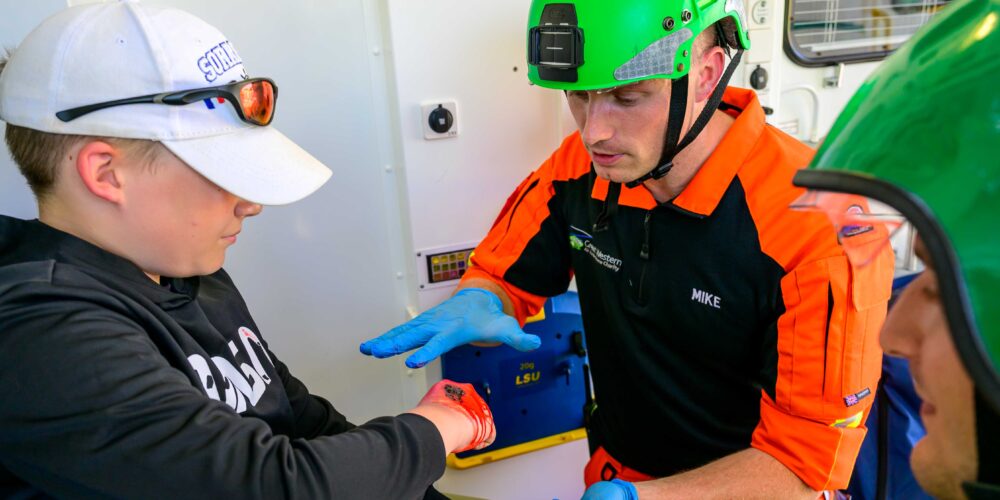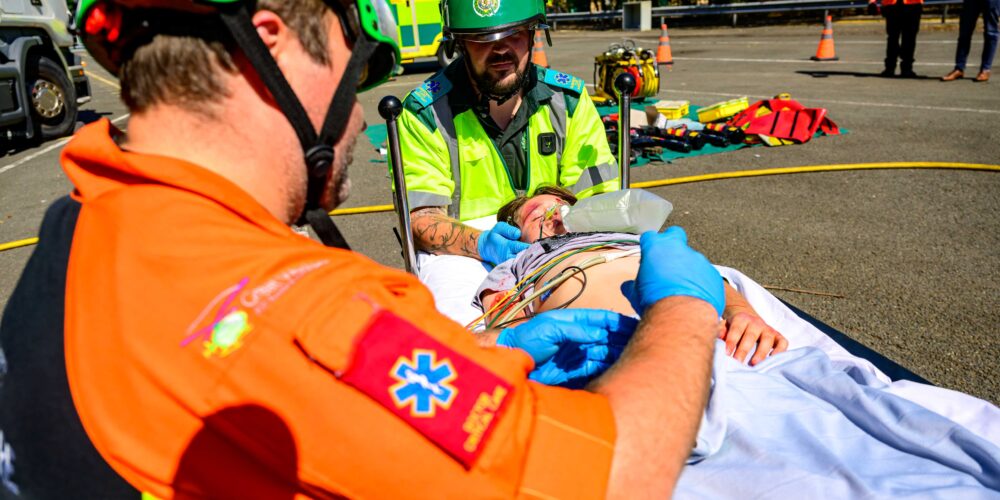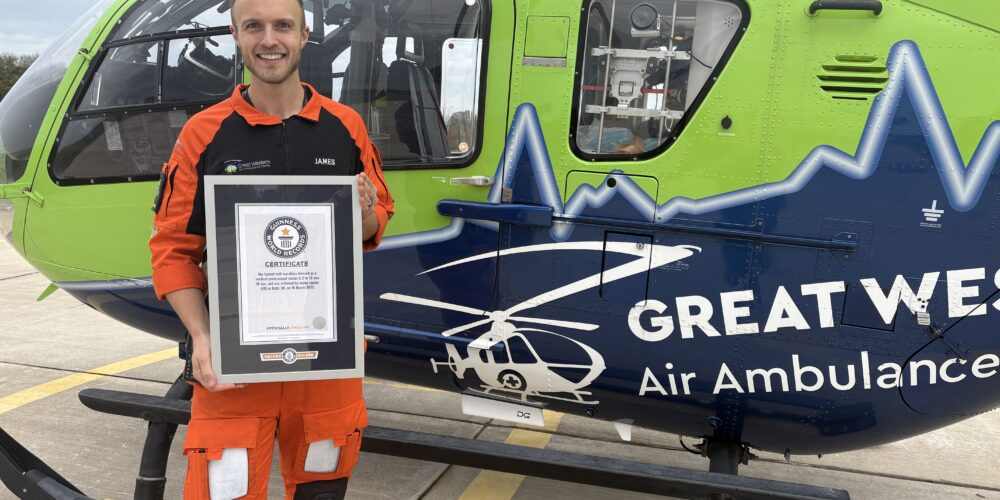
Meet Dr Mike
June 11, 2024
GWAAC Shop Update: 2024 So Far…
June 26, 2024Great Western Air Ambulance Charity (GWAAC) and its aviation partner Babcock International Group (Babcock) have partnered with Dyson to monitor the quality of air inside the charity’s EC135-T2 helicopter (Helimed 65) in what we believe is the first trial of its kind with an air ambulance. A Dyson latest-generation air quality monitoring backpack will be used to assess the air quality in Helimed 65 over two weeks; the outcome of which will inform decisions about whether changes are needed to improve the quality of air for crew and patients.
What is a Dyson air quality monitoring backpack?
Dyson air quality monitoring backpacks were introduced in 2019 for the Breathe London study. The study equipped five London schools with mobile air sensory technology to develop an understanding of the air quality inner-city children are exposed to.
Dyson has since used the technology to monitor air quality in cities across the world and to look at the impact on air pollution from the COVID-19 lockdown. Other Dyson projects have looked at the effects of clean air versus polluted air on the performance of athletes.
The backpack contains a monitor and a battery pack to measure six different types of pollutants (particulate matters, volatile organic compounds, CO2…)
Why is GWAAC taking part?
Air quality concerns arose during the COVID-19 pandemic due to the risk of our crew being infected with the virus whilst in flight. Air quality is a priority to us, so we jumped at the chance to participate in this trial with Dyson and Babcock.
The trial aims to get a baseline of what our crew and patients breathe in during a flight so we can understand if there are any points of concern.
Once we understand our baseline air quality, together with Babcock, we can determine any additional measures we need to include to improve the air quality in Helimed 65. Any measures incorporated into Helimed 65 will need to be compliant with all regulatory and safety requirements of operating an air ambulance.
What does the trial involve?
Dyson’s air quality monitor backpack will conveniently hang over the back of the front seat in GWAAC’s helicopter. It’s the seat next to the Pilot used by a Specialist Paramedic who is trained to help navigate and keep a lookout for hazards. The backpack will face into the cabin where the rest of the crew sit, along with the patient for the two-week trial.
There is space inside the backpack so it can double as a usable bag to carry equipment for the crew (very handy!) such as an EPCR (Electronic Patient Care Record) that the crew uses to record patient information.
The air quality monitor will be in record-only mode to prolong battery life with an app installed on an iPad that remains at the airbase and can be viewed once the helicopter has returned to base.
The air quality monitor will need a charge every three to four days.
What happens next?
Dyson will analyse the data collected from the air quality monitor alongside information provided by Babcock that will include flight times, where the helicopter has been, how many people were in the cabin and how it was ventilated during that flight.
The crew will also be using the Dyson air quality monitoring backpack in the critical care cars and in other settings around the airbase such as the Operations room and in the hangar. It is hoped the technology will help us understand the air quality at our Almondsbury airbase, and any measures we should consider taking.
“Air quality is a growing health concern, and this trial will allow us, in partnership with Dyson and Babcock to explore the air quality for our patients and crew onboard HM65 as well as around our base.”
Tim Ross-Smith, Operations Officer, Great Western Air Ambulance Charity
“Air quality is a growing health concern, and this trial will allow us, in partnership with Dyson and Babcock to explore the air quality for our patients and crew onboard HM65 as well as around our base.”




